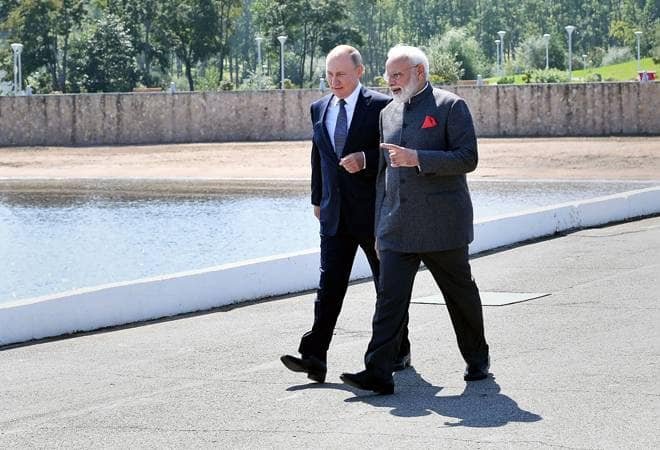Rethinking Russia-India-China (RIC) Cooperation

Russia-India-China, a pan geographic trilateral that goes beyond regionalism with its unique convergence of geography, foreign policy philosophy, and economic ascent. In a unipolar world spearheaded by the United States, these three countries positioned themselves for multipolar world order. Occupying about 19 percent of the global landmass, contributing over 33 percent of the global GDP, this grouping stands for non-western perspectives more than an anti-US perspective on the global order aiming to create a new economic structure for the world. They focused on sovereignty and territorial integrity, impatience with homilies on social policies and opposition to regime change from abroad.
Moulded under the leadership of Yevgeny Primakov, a Russian politician and diplomat who was also the Prime Minister of Russia between 1998 and 1999, the RIC was his brainchild aiming at creating a counterbalance to the western alliance. The formation of RIC was driven by the dual motives of “end[ing] its (Russia’s) subservient foreign policy guided by the U.S.,” and “renewing old ties with India and fostering the newly discovered friendship with China.” In the recent past, there has been growing consensus between the parties to emphasise on the need for free and open markets, opposing any efforts at protectionism and unilateralism, condemning the United States’ actions. During the many meetings held, the trio have addressed a range of issues including counterterrorism, multilateralism, climate change and cooperation.

For Russia, the RIC stands as a uniting force countering the rise of the United States and the development of a unipolar world. For China, it provides a platform to push for its interests in Eurasia. As for India, the RIC provides a platform to cooperate with both, the smaller powers in East Asia and the bigger global powers. It provides India with an opportunity to balance out one grouping with another and places India at a neutral stance when it comes to taking sides and supporting a country Despite it all, the Russian objective of countering the rise of Washington would have aligned with that of India’s but off late because of the visible tensions between two of its three members within the RIC, the Indian motive seems to be unclear. New Delhi and Beijing’s border tussle coupled with India’s strategic partnership with the United States seems to push India to rethink its stance which is completely opposite of the RIC’s objectives of seeking to undermine Washington’s role in the Indo-Pacific. India and Russia have had strong relationships dating back to the Nehruvian times. The “trilateral format is a platform to foster closer dialogue and practical cooperation in identified areas among the three countries” which now seems to have thinned because of the disputes between China and India occurring at the Galwan Valley between the Indian Army and the Chinese People’s Liberation Army (PLA) which led to casualties on both sides seems to be the biggest reason for the deterioration of value of the RIC in the current world order. Alongside, India’s participation in Indo-Pacific groupings against the rise of aggressive China also seems to be a hurdle.
Despite being an important trilateral grouping, the RIC needs to re-evaluate itself and diffuse ongoing tensions. Moscow, which has always acted as a neutral arbitrator between the two competing nations, took lead and clearly stated its intentions to defuse tensions between India and China, addressing their bilateral issues but the real challenge Russia faces is to make the countries abide by their commitments, fully and sincerely. Thus far, honest execution of obligations has surfaced as the biggest hurdle. Considering that, holistic, stable security architecture on the Eurasian landmass cannot occur without involving Beijing, Delhi and Moscow, Russia needs to take up fair initiates in order to reinstate the importance of RIC as an ideal forum in this region.

In the current international scenario, the US is no longer the unchallenged premier global power and it has undeniably been challenged by different countries, especially China, from various fronts. Since time immemorial, India has played the role of a neutral country, starting from the Non Alignment Movement. Considering China’s visible aggression accompanied by healthy relationships with Washington, time has arrived for India to balance out the Russian objective against the United States’s friendly relationship. Irrespective of the decision, India stands on a slippery ground having to take sides and time shall only decide its stance on bringing together three of the largest Eurasian countries which are also geographically contiguous as against supporting the super power and staying neutral by finding a mid path. Washington and New Delhi, and Moscow and New Delhi have fairly maintained momentum thus it is too early to state the changes in calculations unless China takes a drastic decision.


















